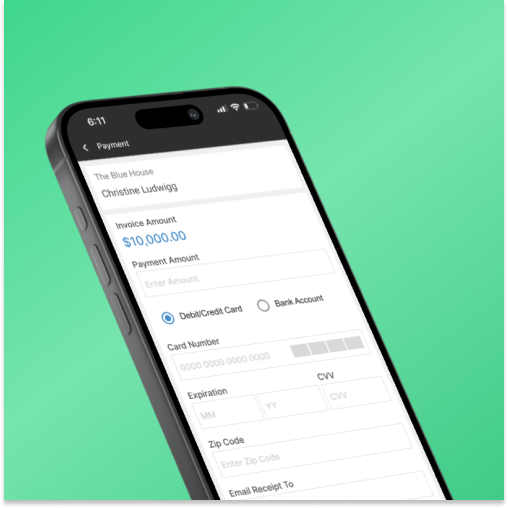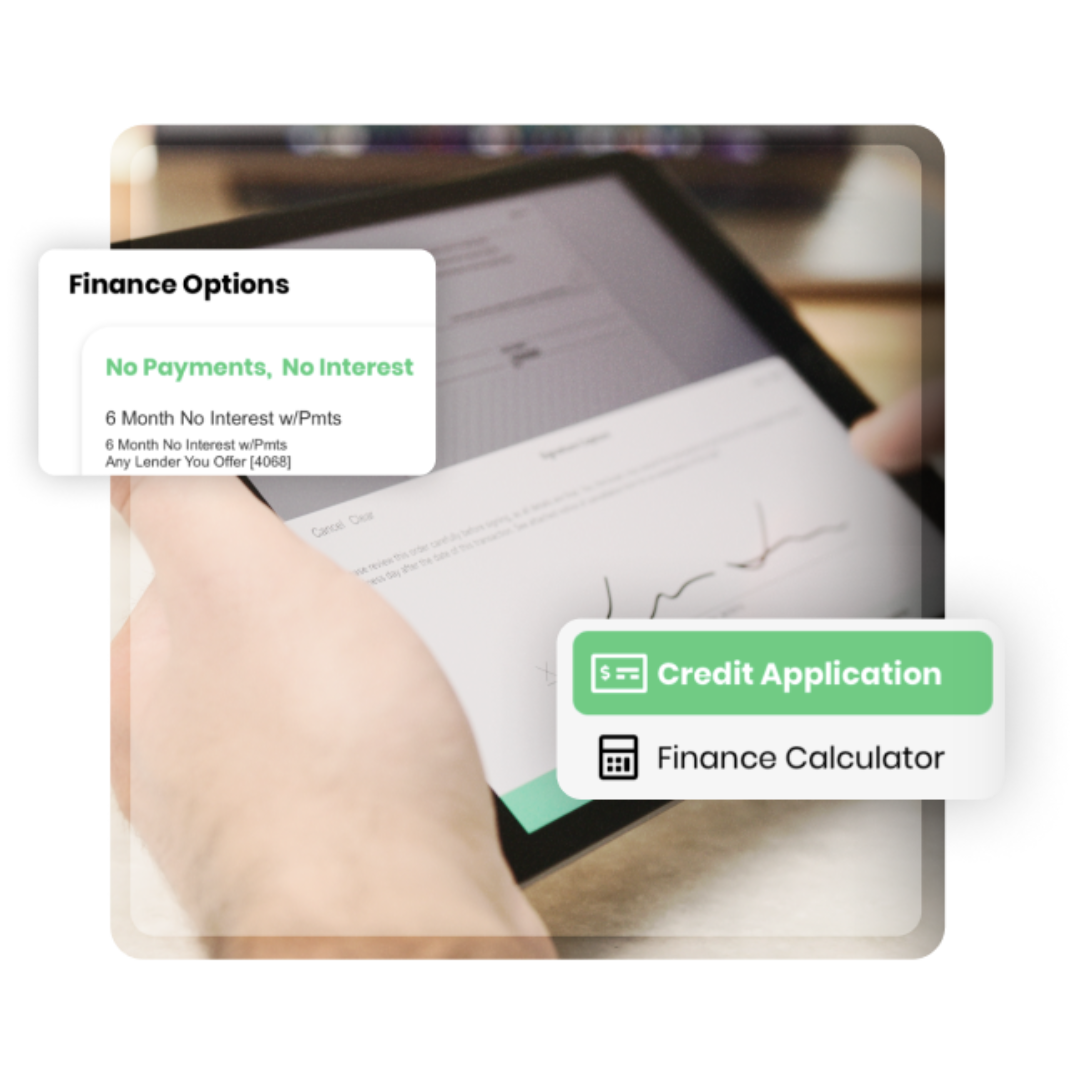For home improvement contractors, every detail plays a crucial role in the sales process. However, producing and managing invoices has often been an inconvenience or annoyance once a job begins. In fact, the importance of contractor invoicing cannot be overstated.
Invoices are not just a procedural aspect of the business; they’re a cornerstone to your customer relationships and overall business sustainability. In this in-depth guide, we will dive into the significance of new technology for producing invoices. Let’s explore the many methods contractors can employ to generate and manage these important documents.

What is Contractor Invoicing?
Beyond being a financial document, an invoice serves as a communication tool that goes beyond the actual transaction. It’s also a comprehensive breakdown of the services rendered, materials utilized, and associated costs.
This transparent document acts as a binding agreement, ensuring that both contractors and homeowners share a mutual understanding of the financial responsibilities of the home improvement project. Moreover, it serves as a testament to the commitment and transparency of your business.
Traditionally, contractors have relied on paper materials and standard filing to produce and manage each invoice for each job. Unfortunately, this often led to errors due to chicken-scratch handwriting or lost paperwork altogether.
Impact on Home Improvement Sales
In the competitive landscape of home improvement, trust serves as the bedrock of successful projects. Contractor invoicing plays a pivotal role in building and maintaining this trust.
By providing a meticulous and transparent breakdown of costs, homeowners gain confidence in the professionalism and reliability of the contractor. This trust is not only a prerequisite for securing projects but is instrumental in garnering positive referrals and repeat business.
That’s why many contractors are turning to payment systems and CRM solutions to generate accurate invoices and manage the entire process. For example, the right invoicing software can help:
- Automate and quickly generate invoices
- Access all project details in one centralized application
- Process payments and track financials for every job
- Provide transparency for homeowners
- Streamline communications
Homeowners value effective communication as much as anything else. And invoices act as a concise and clear channel of communication. They summarize the work completed, costs incurred, and payment details.
This clarity minimizes misunderstandings, ensuring the contractor and homeowner remain aligned throughout the various stages of the project. A well-crafted invoice is not just a financial statement; it’s a document that speaks the language of collaboration and shared goals.
Different Ways to Generate Invoices
Having established the fundamental importance of invoices, let’s explore the diverse methods contractors can employ to create these indispensable documents.
Traditional Invoicing Methods
In the past, handwritten invoices were not just a norm but a testament to the personal touch in business transactions. While they may evoke a sense of nostalgia, they come with inherent challenges that lead to common mistakes.
Illegible handwriting, the risk of errors, and the time-consuming nature of manual documentation make handwritten invoices less efficient. In general, this traditional method is still in use by many contractors today. However, it’s hurting businesses in today’s fast-paced home improvement landscape.
Modern Invoicing Methods
The digital age has ushered in the era of contractor software, revolutionizing the way contractors create invoices. These software solutions offer templates with categorized fields, simplifying the input of project details.
Contractors can now generate professional invoices with ease. This eliminates the need for extensive manual input. Furthermore, the efficiency gained allows contractors to focus more on the actual projects and less on administrative tasks.
Taking efficiency a step further, cloud-based platforms provide accessibility from anywhere with an internet connection. Contractors can create, send, and track invoices on-the-go. This offers unparalleled convenience and flexibility.
The cloud-based approach also enhances collaboration between contractors, homeowners, and other stakeholders such as subcontractors. Real-time updates and shared access contribute to a more transparent and efficient workflow.
Benefits of CRM Software and Payment Systems
Customer Relationship Management (CRM) software, when integrated with payment systems, can streamline all contractor invoicing. It goes beyond simple invoices, allowing for the automation of repetitive tasks and reducing the time spent on paperwork.
The integration of CRM with payment systems streamlines the entire invoicing process, from creation to delivery. This makes it a more efficient and error-resistant sales operation.
One of the standout advantages of CRM software is its ability to expedite payment processing. Contractors can receive payments promptly, enhancing cash flow and ensuring that projects stay on schedule.
This efficiency is particularly crucial in a sector where timely payments are paramount for sustaining operations and initiating new projects. Integrating payment systems with a CRM eliminates the lag time between invoicing and payment receipt, contributing to a healthier sales process.
Beyond invoicing, CRM software provides a holistic view of all transactions associated with each job. This comprehensive insight aids in financial planning. In addition, it offers valuable data on project profitability and areas for improvement.
The ability to track transactions at this granular level of detail is a powerful tool for contractors seeking to optimize their financial strategies. It enables data-driven decision-making and allows contractors to identify patterns, assess project performance, and make sales adjustments.
Furthermore, an industry-specific CRM with project management tools provides a unified platform for contractors to oversee all aspects of their projects. From communications to task management, this ensures that contractors have a centralized hub for every step of every project. It also minimizes the risk of information gaps and enhances overall project efficiency.
The Future of Contractor Invoicing
As we look ahead, contractor invoicing is poised for further transformation. Advancements in technology, coupled with a growing emphasis on efficiency, will continue to shape the way contractors approach the sales journey.
It’s not just a routine financial process; it’s necessary documentation that can profoundly impact the success and sustainability of a home improvement business. That’s why Leap has developed LeapPay to help your business get paid faster.
LeapPay is not merely about billing; it also works directly with Leap CRM, helps you track your finances, and quickly produces professional invoices that don’t miss a single detail. Your team can quickly accept credit card payments online or in-person in record times.
Better yet, LeapPay is a system that resonates with homeowners as it provides the flexibility they need to make payments on time. It’s a win-win for your business that integrates with your CRM and empowers your sales team.
Is your team struggling to generate accurate invoices? If so, fill out the form below and schedule a quick demo with Leap!




